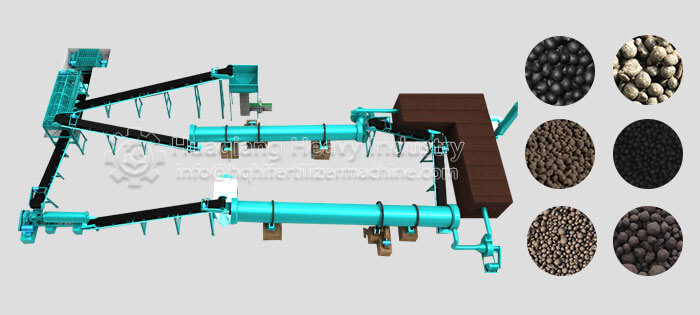
Composting is the core stage in bio-organic fertilizer production lines. Its quality directly affects the effectiveness and safety of the final product. A scientific and well-managed composting process not only boosts efficiency but also ensures the stability and nutrient content of the organic fertilizer.
Raw Material Selection and Mixing
1.Adjusting Carbon-Nitrogen Ratio: Keep the ideal C/N ratio between 25:1 and 30:1 by mixing materials like crop stalks and livestock manure.
2.Raw Material Prep: Crush large chunks to 3–5 cm to promote fermentation.
3.Harmful Substance Control: Strictly test for heavy metals and avoid materials with excess antibiotics or salt.
Critical Composting Parameters
1.Temperature Control:
Warm-up phase: Reach >50°C within 24 hours.
High-temperature phase: Maintain 55–65°C for 5–7 days to kill pathogens.
Cooling phase: Let temperature drop below 40°C before moving to curing.

2.Moisture Management:
Start with 50–60% moisture. Check regularly; add bulking agents if exceeding 70%. Use compost turning machines to distribute moisture evenly.
3.Aeration:
Keep oxygen levels above 5%. Use turners or forced-air systems.
Turn frequency: Every 2 days during high heat; 1–2 times weekly later.
Final Product Quality Checks
1.Maturity Test: Seed germination index >80%; C/N ratio <20:1.
2.Hygiene Standards: Fecal coliform bacteria ≤100 per gram; roundworm egg mortality ≥95%.
3.Nutrient Standards: Organic matter ≥30%; total nutrients (N + P₂O₅ + K₂O) ≥4%.
Mastering these composting steps help bio-organic fertilizer production lines significantly improve product quality and efficiency, enabling stable and high-output operations.